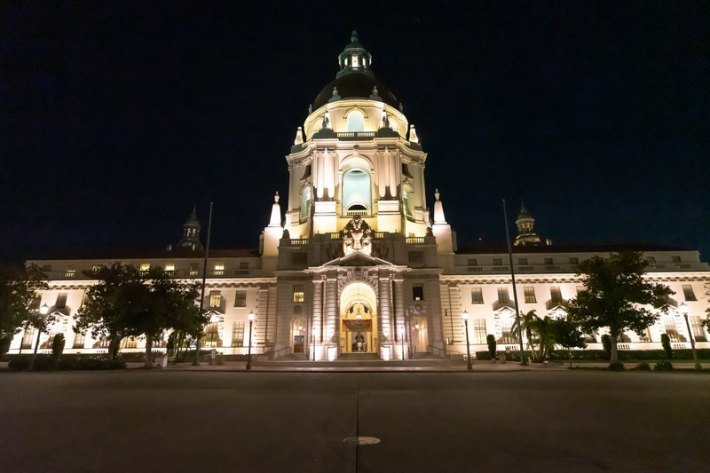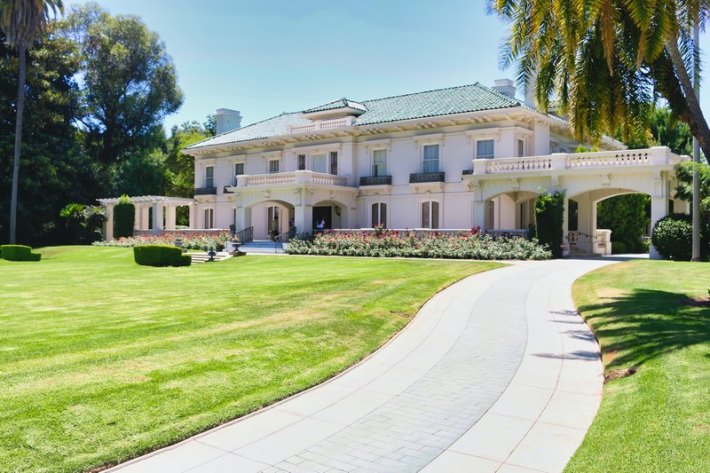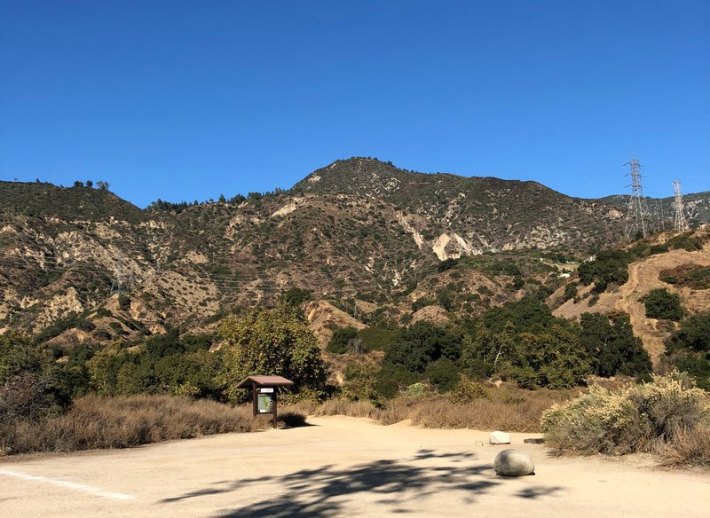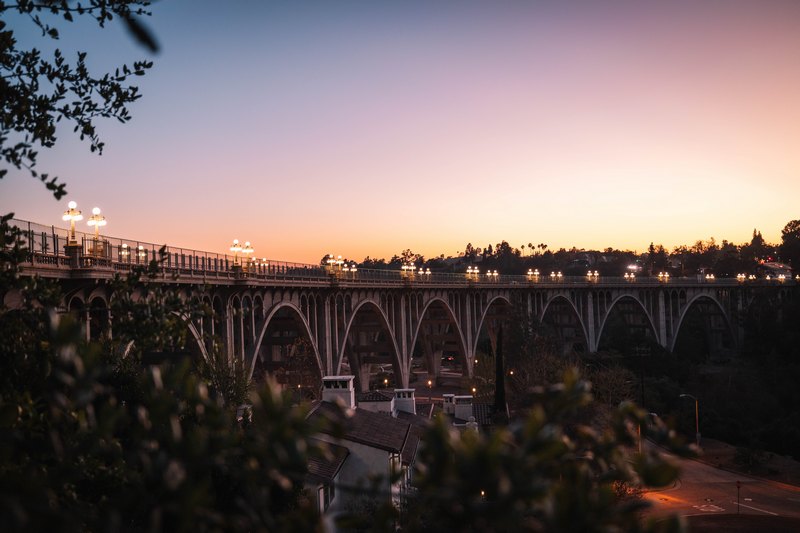L.A. TACO is currently on its biggest mission yet: to create a food guide for every single neighborhood in Los Angeles! Along the way, we will also be releasing brief histories of each neighborhood to understand L.A.’s past and present a little more, all the while celebrating how each and every square inch helps make our fine city the best in the world. Today we’re taking a look at Pasadena.
Pasadena is located in a land long inhabited by a Native Tongva society known as the Hahamog’na or Xaxaamonga, who lived in the foothills of the Verdugo Mountains and San Rafael Hills, areas of the Arroyo Seco around Altadena and today’s Pasadena, and north of the L.A. River in the far eastern San Fernando Valley, around present-day Glendale. The Xaxaamonga shared this name with their leader, Hahamongvic, and land, which is said to mean “flowing waters, fruitful valley. In 1770, the community had the misfortune to encounter an exhausted, wayward Gaspar de Portolà, leader of the Spanish expedition from Mexico into what we know as California now, a year before Junipero Serra founded the Mission San Gabriel. Despite sharing a pipe with the Spaniards, the natives of this land, much like Tongva inhabiting surrounding communities of today’s Southern California for thousands of years, were enslaved there, forced to convert to Christianity, and denied a return to their beliefs, practices, and customs. Hahamongvic was renamed "Pascual" while his people were dubbed the “Pascualite Indians,” and the region’s natives as a whole are now called “the Gabrieliños.” You can learn more about today’s Gabrielino-Tongva Nation here.
As eventually always happens when the Spanish colonize someone’s beautiful natural land around here, the region was eventually divided by the conquerors and distributed as they saw fit. In 1834, the Mexican governor of Alta California, José Figueroa, gave over 14,000 acres surrounding mission land to retired Mission mayordoma Eulalia Pérez de Guillén Mariné and her husband, retired artillery lieutenant Juan Mariné in a land grant. This was a few years following the death of his first wife, a daughter of the extremely prominent Sepulveda family. Rancho el Rincon de San Pasqual encompassed land that today includes Pasadena and South Pasadena, plus parts of San Marino, San Pasqual, and Altadena. Over the next decades, the land would change hands between heirs from prominent Californio families and an eventual new claimant, retired Mexican Army lieutenant Manuel Garfias, who acquired 13,694 acres but lost it later in a sale intended to fund an elaborate adobe. The rest, initially given to Tennessee-born, a Mexican citizen and future L.A. mayor Benjamin "Don Benito" “Mount” Wilson, would be portioned off and sold variously over the next few years between Anglo newcomers.

In 1873, Wilson and fellow landowner Dr. John S. Griffin received a visitor, Daniel Berry, an asthmatic doctor from Indiana representing a group of people looking to get the hell out of there following a particularly brutal winter. After checking out some of our finer areas (Anaheim was dismissed for its abundance of “musketeers”) Berry was able to purchase 4,000 acres of land near the Arroyo Seco on the eastern part of Rancho San Pascual from the properties of both Wilson and Griffin. Here, a group of Indianans came west and established The Indiana Colony, changing the name to “Pasadena” with the establishment of a post office. Historians say the name words “pa-sa-de-na” are a suffix in a Minnesota Chippewa language that were found on a selection of proposed names, and means “of the valley.”
Pasadena became Los Angeles County’s second incorporated municipality in March 1886. Over the next 40 years, train travel helped the city explode, bringing Midwesterners, Texans, and East Coasters avoiding winter into this increasingly popular resort town. Grand dame hotels like the original Raymond (the first, in 1886) and now-extinct Maryland were built. Many visitors stayed for the weather and natural beauty, leading to a surge in commercial development, huge new estates, and the locally based Green brothers’ newly styled American Craftsman homes still seen today in stunning examples like their Gamble House ultimate bungalow.
Pasadena is also one of the few cities in Los Angeles that have their own water well and privately owned water companies, not dependent on the Colorado River for water. However, "Sunny Slope Water Company" only services a select area in Pasadena. Their radius for Pasadena-sourced water service can be seen on their website. This natural water source was well guarded by natives in the area until the Spanish arrived and started selling the precious water.
Because of this water surplus, Pasadena used to be a major grape-growing region in the 1930s. The area was known to grow table and church wines. Vin de California is the first winery to make wine again in Pasadena in nearly a decade. Their production is small and the winemaker Adam Vourvoulis is focused on making natural and minimal intervention affordable wine from grapes grown in Central California.
By 1940, Pasadena had become the 8th largest city in California, almost equivalent in reputation and status to its bigger sister, Los Angeles. The city’s first freeway, The Arroyo Seco Parkway, was opened to connect the two cities in 1940.

Before there was Duff Gardens, Pasadena had Busch Gardens, a precursor to the national theme parks of the same name. The landscaped 36-acre gardens, which featured painted fairy statues, streams, and walking paths, were created by Adolphus Busch, the German-born co-founder of Anheuser-Busch and a former Union Army corporal. Opened to the public at his own private winter residence on Orange Grove Drive in 1906, it became a major tourist attraction and was used in major films such as Frankenstein, Gone With The Wind, and The Adventures of Robin Hood. Before it closed, it doubtlessly inspired a few other future theme park giants intent on capitalizing on fantasy, imagination, and whimsy. The gardens closed in 1937 after seeing over one million visitors during its run, with the city of Pasadena declining an offer from Busch’s widow to use the land as a park. A new location was opened at the brewery in Van Nuys in 1966, including boat rides, a monorail, and free beer. Remnants of the Pasadena garden theme park supposedly still exist in the residential development that has replaced it.

1970, the controversial construction of the 210 Freeway caused the destruction of over 1,000 homes, displacing families and driving a wedge between several wealthy and less fortunate neighborhoods. Into the seventies, crime, and abandonment surged in Downtown Pasadena amidst residential populations fleeing to the suburbs of the Inland Empire and threatened urbanized development in the form of high-rise buildings in Old Town that was fought valiantly by preservationists. At the same time, Downtown became something of a hub for artists, a group of which launched the still-running Doo Dah Parade in 1976. Gang violence also became a major concern for north Pasadena starting in the seventies and going through the early 90s. On Halloween 1993, three young teens were shot and killed, and another three wounded, by members of a Bloods gang in their twenties who mistook them for foes, leading to heightened police measures and an ensuing decline in crime and gang violence. The opening of the Gold Line in 2003, gentrification and development, as well as civic safety and beauty campaigns, have again made Downtown Pasadena a bustling commercial and residential area, known for its collection of bars, shops, and restaurants.
Pasadena is home to numerous museums, schools, and institutions, including the California Institute of Technology and The Norton Simon Museum. It may be best known for its annual Rose Bowl football game and Tournaments of Roses Parade. A handful of famous people grew up in Pasadena, too, including musician Phoebe Bridgers, chef Julia Child, White Lotus creator Mike White, Jackass party boy Chris Pontius, novelist Octavia Butler, famed director Victor Fleming, and pornographic actress Christy Canyon, among the many.







